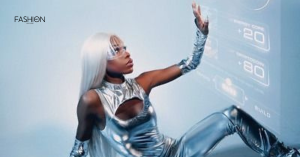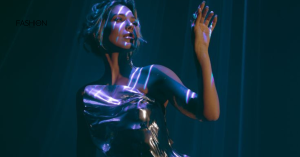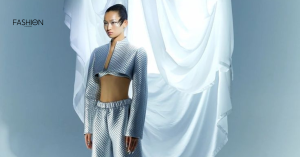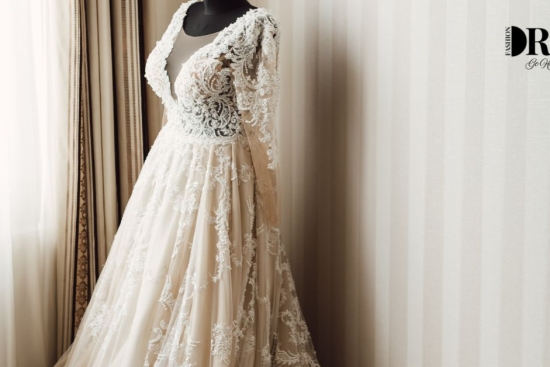
Fashion is not just about clothes; it’s also about ideas, creativity, and now, technology. The blend of fashion technology, known as fashion tech, is changing how we design, wear, and think about clothing. This mix opens up new possibilities, making fashion more innovative and functional. For example, we can now create smart fabrics that do more than just cover our bodies. They can react to the environment, track our health, and even connect to our devices.
Wearable Technology: Fashion Meets Functionality
Wearable technology is at the heart of this exciting change. Imagine wearing a shirt that can monitor your heart rate or a pair of sneakers that tracks your steps. These items are designed to keep us comfortable while helping us stay connected and healthy. Smart fabrics, made from special materials, can do things like regulate body temperature or change color based on mood or surroundings.
Connected clothing takes this even further. It allows us to link our garments with our smartphones and other gadgets. This connection means we can receive notifications, control music, or even adjust our fitness goals directly from our clothes.
Fashion tech is revolutionizing the way we view and experience clothing. It’s not just about looking good anymore; it’s about how our clothes can work for us, making our lives easier and more enjoyable. As we continue to embrace these innovations, the future of fashion will be more functional, interactive, and exciting.

3D Printing and Customization
What is 3D Printing?
3D printing is a technology that makes objects from a digital design. It adds layers of material to create a three-dimensional shape. In fashion, this means designers can produce unique clothing and accessories directly from their ideas. Instead of sewing or cutting fabric, they can print items using different materials like plastic, metal, or even fabric.
Benefits of Customization:
One of the best things about 3D printing is customization. It allows customers to choose exactly what they want. They can select colors, sizes, and designs that fit their personal style. This means every piece can be special, made just for them. Imagine being able to create a dress that fits perfectly, not just one-size-fits-all.
Sustainable Fashion:
Sustainability is an important topic in fashion today. Traditional manufacturing often creates a lot of waste. However, 3D printing uses only the material needed for the item, reducing leftover scraps. This makes it a more eco-friendly option. By using less material, brands can also lower their impact on the environment.
New Designs and Styles:
3D printing allows designers to think outside the box. They can create shapes and patterns that are hard to make with regular methods. This technology encourages creativity, leading to exciting and innovative designs. For instance, a designer could create a dress with intricate patterns that would be impossible to sew by hand.
Quick Prototyping:
The process of designing clothes usually takes a long time. However, 3D printing speeds up this process. Designers can quickly create prototypes—models of their ideas—to test and improve them. This means they can bring new collections to stores faster, keeping up with changing trends and customer preferences.
AI and Data-Driven Fashion
Understanding AI in Fashion:
Artificial intelligence (AI) is a technology that helps computers think and learn like humans. In the fashion world, AI analyzes large amounts of data to help brands make better decisions. For example, it can study what people are buying, which styles are popular, and how trends change over time.
Personalization:
One of the main advantages of AI in fashion is personalization. By understanding individual preferences, AI can suggest clothing that matches a customer’s style. For instance, if a customer frequently buys colorful dresses, AI can recommend similar items that they might like. This tailored shopping experience makes it easier and more enjoyable for customers to find what they want.
Trend Forecasting:
AI is excellent at analyzing patterns in data. It looks at social media, fashion shows, and online searches to predict what trends will emerge. For example, if many people are posting about a certain type of clothing, AI can alert brands that this style might become popular soon. This helps brands stay ahead of the curve and prepare for upcoming trends.
Inventory Management:
Managing stock is crucial for fashion brands. AI can help by tracking inventory levels and sales patterns. It can predict which items will sell well and when, so brands know when to restock. This not only prevents shortages of popular items but also helps avoid overproduction, reducing waste.
Improving Customer Experience:
AI can enhance the sho
pping experience for customers in several ways. Virtual fitting rooms allow customers to see how clothes might look on them without tryin
g them on. Chatbots can assist customers online, answering questions and helping with purchases. These features make shopping more convenient and enjoyable, encouraging customers to return.
Virtual Reality (VR) and Augmented Reality (AR) in Fashion
Virtual reality (VR) and augmented reality (AR) are changing how we shop for clothes. These technologies let us see how clothes look on us without trying them on. With VR, you can enter a virtual store, browse through items, and even try on outfits using a headset. This makes shopping more fun and less stressful.
AR takes this a step further. For example, using a smartphone, you can point your camera at a piece of clothing to see how it would look on you. Some brands even offer apps that let you “try on” accessories or makeup in real time. This way, you can see if a dress fits your style before making a purchase, making shopping easier and more exciting.
Sustainability through Technology
Technology is also helping the fashion industry become more sustainable. Many brands are now using eco-friendly materials and production methods to reduce waste. For example, some companies use 3D printing to create clothes, which helps cut down on leftover fabric.
Innovations like digital fashion shows and virtual fittings mean fewer resources are wasted on physical samples and clothing. Plus, apps are being developed to help consumers recycle old clothes, encouraging a cycle of reuse. This shift toward sustainability is good for the planet and shows that fashion can be both stylish and responsible.
By combining these technologies, the fashion industry is not only improving the shopping experience but also working towards a greener future.
Blockchain and Transparency in Fashion
In the fashion world, people care more than ever about where their clothes come from. They want to know if their clothing is made ethically and if it’s real or a copy. This is where blockchain comes in.
Blockchain is a special kind of technology that helps keep track of information. It works like a secure digital notebook that everyone can see but no one can change. In fashion, brands can use blockchain to show exactly where their materials come from and how their clothes are made. For example, a customer can scan a code on their clothing tag and see the entire journey of that item, from the farm where the cotton was grown to the factory where it was sewn.
This transparency helps ensure authenticity. Customers can trust that they are buying genuine products and not fake ones. It also helps fight against bad practices like using cheap labor or harming the environment. When brands use blockchain, they show they care about doing the right thing. This can make customers feel good about their purchases, knowing they support ethical fashion.
The Future of Fashion Shows: Digital and Virtual Runways
Fashion shows have always been a big part of the industry, showcasing the latest trends. However, traditional fashion shows can be expensive and not accessible to everyone. Technology transforming fashion has made the future of fashion shows brighter, with the rise of digital and virtual runways.
With technology, brands can create amazing online shows that anyone can watch from anywhere in the world. Virtual reality (VR) allows people to experience a fashion show as if they were sitting front row, even if they’re at home. This opens the door to a larger audience and lets more people enjoy fashion.
Moreover, digital fashion shows are often more sustainable. They use fewer resources, like materials and travel, which helps the environment. They also give designers the freedom to be creative in ways that traditional shows cannot. Designers can use special effects and animations to bring their collections to life in unique ways.
As technology continues to advance, we can expect fashion shows to become even more exciting and interactive. This shift not only makes fashion more accessible but also reflects the industry’s move toward innovation and sustainability.
Challenges and Ethical Considerations in Fashion Tech

- Data Privacy
– User Data Collection: Fashion tech often collects personal information from users, including shopping habits and preferences. This raises concerns about how this data is stored and used.
– Cybersecurity Risks: With the increase in data collection, there’s a greater risk of data breaches. Sensitive information can be exposed, leading to identity theft and privacy violations.
– Consent Issues: Many users may not fully understand the terms and conditions regarding their data. It’s essential for companies to clearly communicate how data will be used.
- Labor Issues
– Working Conditions: The tech behind fashion can impact labor practices, especially in factories. Workers might face poor conditions, low wages, and long hours, especially in developing countries.
– Automation: As fashion tech grows, automation may replace some jobs. This can lead to job loss for workers who rely on these positions for their livelihood.
– Fair Wages: Ensuring fair pay for workers involved in fashion tech is crucial. Companies need to adopt ethical practices to support their workers adequately.
- Digital Divide
– Access to Technology: Not everyone has equal access to the latest fashion tech. This can create a gap between those who can benefit from new technologies and those who cannot.
– Skill Gap: Many workers may lack the skills to engage with advanced fashion technology, limiting their job opportunities and potential for growth in the industry.
– Regional Disparities: In some regions, especially rural areas, technology may not be as accessible, leading to inequities in the fashion market.

Fashion tech innovations are continuously evolving, presenting both opportunities and challenges. While it enhances creativity and efficiency, the industry must also address ethical concerns. Technology transforming fashion brings exciting possibilities, but balancing innovation with respect for privacy, fair labor practices, and inclusivity is crucial for a sustainable future.
As we move forward, focusing on these ethical considerations ensures that fashion tech benefits everyone involved. With advancements like virtual runways and online fashion shows, the potential is vast, but ethical responsibility must remain at the forefront of these innovations.









Comments (29)
🔕 Email: Process #VG67. WITHDRAW =>> https://telegra.ph/Message--2868-12-25?hs=f8173e2cfac8d4612fc286d9a45ed7b1& 🔕says:
01/01/2025 at 08:00m4m6q2
finasteride 5 mg tablet costsays:
17/01/2025 at 09:18Conclusions In these large prospective studies, individuals with a genetic predisposition for hyperuricaemia are not at a higher risk of developing diuretic induced gout than those without buy propecia finasteride 1mg Typically affected women will suffer for long periods before seeking treatment, and most will have tried a variety of ineffective over the counter PMS remedies
Brianvoksays:
29/01/2025 at 16:58farmacia online senza ricetta: Farmacie online sicure – comprare farmaci online all’estero
migliori farmacie online 2024
Edwarddipsays:
31/01/2025 at 07:58acquistare farmaci senza ricetta: Farma Prodotti – farmacie online autorizzate elenco
Brianplodssays:
31/01/2025 at 08:52acquistare farmaci senza ricetta http://farmaprodotti.com/# farmacie online affidabili
farmacia online piГ№ conveniente
NathanHussays:
31/01/2025 at 09:28farmacie online sicure [url=http://farmaprodotti.com/#]Farma Prodotti[/url] migliori farmacie online 2024
DavidAbonssays:
31/01/2025 at 11:56http://taya777.icu/# Many casinos host charity events and fundraisers.
The thrill of winning keeps players engaged.
Patricksnubysays:
31/01/2025 at 12:56The Philippines offers a rich gaming culture.: taya777 app – taya777 login
Lannypersays:
31/01/2025 at 13:25High rollers receive exclusive treatment and bonuses.: taya365 login – taya365.art
Williamamushsays:
31/01/2025 at 14:28Loyalty programs reward regular customers generously. http://phmacao.life/# Casino visits are a popular tourist attraction.
DavidAbonssays:
31/01/2025 at 16:04https://taya777.icu/# High rollers receive exclusive treatment and bonuses.
The casino experience is memorable and unique.
JosephLibsays:
31/01/2025 at 17:08phmacao com login [url=https://phmacao.life/#]phmacao com login[/url] п»їCasinos in the Philippines are highly popular.
Patricksnubysays:
31/01/2025 at 17:55Las promociones atraen nuevos jugadores diariamente.: jugabet – jugabet chile
Lannypersays:
31/01/2025 at 18:21п»їLos casinos en Chile son muy populares.: jugabet chile – jugabet
Williamamushsays:
31/01/2025 at 19:30Players enjoy a variety of table games. http://taya365.art/# Slot machines attract players with big jackpots.
DavidAbonssays:
31/01/2025 at 20:07https://winchile.pro/# Los torneos de poker generan gran interГ©s.
Live dealer games enhance the casino experience.
Patricksnubysays:
31/01/2025 at 22:50Los casinos garantizan una experiencia de calidad.: jugabet.xyz – jugabet
Lannypersays:
31/01/2025 at 23:11Visitors come from around the world to play.: phtaya casino – phtaya casino
DavidAbonssays:
31/01/2025 at 23:59https://winchile.pro/# Los jackpots progresivos atraen a los jugadores.
The gaming floors are always bustling with excitement.
Williamamushsays:
01/02/2025 at 00:25Game rules can vary between casinos. https://winchile.pro/# Las mГЎquinas tienen diferentes niveles de apuesta.
JosephLibsays:
01/02/2025 at 01:38phtaya login [url=https://phtaya.tech/#]phtaya casino[/url] Players enjoy both fun and excitement in casinos.
Patricksnubysays:
01/02/2025 at 03:39Some casinos have luxurious spa facilities.: phtaya casino – phtaya casino
DavidAbonssays:
01/02/2025 at 03:45https://taya777.icu/# Many casinos host charity events and fundraisers.
High rollers receive exclusive treatment and bonuses.
Lannypersays:
01/02/2025 at 03:57Players must be at least 21 years old.: taya365 – taya365 login
Williamamushsays:
01/02/2025 at 05:07Manila is home to many large casinos. https://phmacao.life/# The casino scene is constantly evolving.
DavidAbonssays:
01/02/2025 at 07:16http://taya365.art/# The thrill of winning keeps players engaged.
The poker community is very active here.
Patricksnubysays:
01/02/2025 at 08:15Los jugadores disfrutan del pГіker en lГnea.: jugabet chile – jugabet casino
Lannypersays:
01/02/2025 at 08:29Many casinos offer luxurious amenities and services.: phtaya – phtaya login
Williamamushsays:
01/02/2025 at 09:48Many casinos have beautiful ocean views. https://taya365.art/# Live dealer games enhance the casino experience.